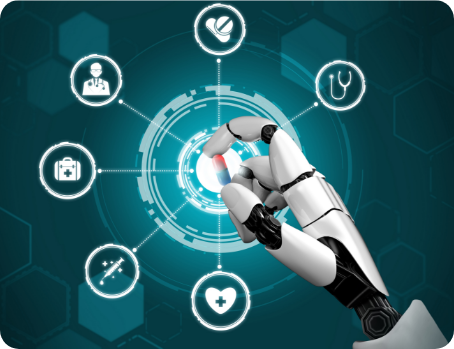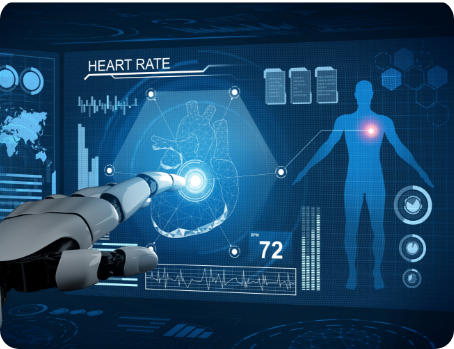For years, a lot of healthcare professionals have attempted a variety of techniques with the pure goal of giving their patients better and more successful care. Everything is culminating, though, around the fact that they are people. They’ve used information, energy, time, and other restricted resources to accomplish many things. They continue to seek a higher-quality healthcare system. They retain all essential information about patient’s medical problems, taking into account their past medical experiences. This is a wealth of data to recall or absorb at a time. As a result, predictive analytics and artificial intelligence play an important part in the healthcare industry.
What Is Predictive Analytics?
The practice of predicting future events with analytical data is known as predictive analytics. It detects early indications of a person. Supervised machine learning aids in the prediction of significant future events. Predictive analysis aids in the reduction of time and costs by allowing you to make better predictions. In a patient’s journey through their disease, predictive analytics is extremely useful for diagnosis, prognosis, and therapy planning. It’s a wonderful instrument that helps healthcare providers improve their value proposition and can also assess a patient’s risk of developing an illness.
Examples Of Predictive Analytics
Recognising Deteriorating Sign In ICU Patients
Timely mediation is essential for a patient’s life, so predictive insights become more relevant when a patient’s condition in the ICU worsens. Frequent monitoring and analysis of a patient’s signs and symptoms are very important to help intervene in a timely manner. Predictive analytics can help identify early warning signs of unfavourable situations in a hospital’s general ward when a patient’s condition worsens and goes unnoticed for too long.
Providing High-Risk Patients With Preventive Care In Their Homes
Predictive analytics proves that healthcare isn’t always found in the hospital; sometimes it’s at home. This is an advanced way for healthcare takers to prevent patients from relapsing without proper treatment. With accurate preventive measures, we can avoid leaving patients at greater risk and discharging them without providing long-term health monitoring.
Early Detection Of Equipment Maintenance Requirements
Predictive analytics proves that healthcare isn’t always found in the hospital; sometimes it’s at home. This is an advanced way for healthcare takers to prevent patients from relapsing without proper treatment. With accurate preventive measures, we can avoid leaving patients at greater risk and discharging them without providing long-term health monitoring.
Aiding Equipment Functions And Prevents Patient Leaks
In order to understand a patient’s situation, predictive analysis helps by sifting through their data. If most of the patients are parents with young children, the focus should be on the services provided by pediatric specialists in addition to adult medicine. Doing this will help create a comprehensive care plan for each individual patient and family.
Recognising Patients At Risk
Predictive analysis can identify which patients are at risk for developing certain conditions and diseases. For example, diabetic patients may need to be hospitalized immediately. You can use predictive analytics to notify these patients of their risks and help them schedule regular check-ups.
Chronic Disease Prevention
Remote patient monitoring and machine learning are critical tools for making predictions. By working together, they can provide the hospital with threshold alerts to support decision-making. They also help patients remember to refill prescriptions, and AI can suggest personalized outreach when a patient falls behind in their care plan.
Management Of Health And Population
Predictive analytics aids physicians in determining which therapy options are the best and most efficient for improving a patient’s health. In this case, AI truly helps to find patients who have comparable issues or medications as existing patients. Machine learning algorithms aid in the clustering of similar patient data patterns. It also aids in increasing patient outcomes by identifying the finest clinical pathways.
Patterns for patient utilization
Based on data, AI can predict low and high times as well as the weak points in a workflow. Doing this helps to create an effective schedule that avoids overworking staff and significant downtime. Through predictive analytics, teams are able to see how much space should be left for emergency visits and the number of appointments booked per day. As a result, it assists with prevention – such as losing patients due to scheduling conflicts.
Using AI to Improve Predictive Analytics
AI aims to replicate human capabilities without the constraint of such things as energy, time, or power. The prediction derived from a patient’s data is completed in a matter of seconds with no need for human involvement. It employs sophisticated algorithms, IT systems, and data processing capabilities to make accurate predictions. Predictive analytics employ technology and statistical methods to process vast amounts of data in order to forecast an individual’s outcomes. Artificial intelligence may help clinicians reduce their administrative workload by developing better clinical decision software. With the help of AI, we can now detect if a patient is at risk for any dangerous medical conditions.
Healthcare Predictive Analytics Market
The healthcare predictive analytics market is competitive, with a large number of healthcare market leaders and rising players. However, due to the increased expense of curbing tools and the availability of funds for research, the rising players mentioned above have an opportunity to enter the healthcare predictive analytics market. The healthcare industry is increasingly utilizing predictive analytics to manage information more efficiently and curb costs. Predictive analytics allows hospitals to identify and detect fraud, transforming the way they operate. This has become possible due to factors such as the increasing size of healthcare databases, investments in digital tech, implementation of electronic health records, and the rising need for cost-effective tools.
Ethics In Predictive Analytics
When algorithms speed up the decision-making process, predictive analytics adds a new risk. This is precisely when human beings take over decisions from machines. The healthcare business is complicated, and it has ethical duties in regard to administration. These responsibilities are determined by the type of decisions that must be made and certain elements of what we do. The ethical obligations and responsibilities of a patient differ from those of their doctor or other family members. Every patient expects their information to remain confidential. When data is collected and used for non-clinical purposes, it raises ethical concerns. To put it simply, the systematic collection and use of patient data is an ethical responsibility that falls on the shoulders of the organization and everyone involved in it.
How P5 Doctor Can Help?
With more and more health organizations using predictive analytics based on AI-based tools and machine learning, the future is looking bright for this technology. P5 Doctor has extensive expertise in medical data labeling, and we provide the finest training data for those models. Contact us to discover more!




